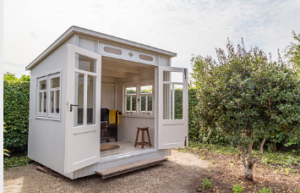Sheds can add value and functionality to any home. Preconfigured sheds are available at many big-box home stores for purchase, making assembly an easy DIY task in the backyard.
 Choose high-grade materials to build durable custom sheds. Insulation and ventilation help prevent moisture build-up, while windows add natural light for improved illumination.
Choose high-grade materials to build durable custom sheds. Insulation and ventilation help prevent moisture build-up, while windows add natural light for improved illumination.
Durability
Aldinga custom sheds should be designed to withstand severe weather conditions like heavy rainfall and snowfall without being damaged, with proper maintenance to extend their longevity and ensure their long-term success. Regular inspection of its roof and walls for signs of wear or damage is critical, and whenever possible, repairs should be completed immediately to reduce further wear on the shed and extend its life expectancy.
Durability also extends to the quality of materials used to construct a shed. A shed constructed with high-grade wood or engineered wood siding is more likely to outlive its rival built using cheaper materials and will likely be approved by most HOAs due to its dependability and longevity.
One way to enhance the durability of a shed is to equip it with a roof featuring shingle-style shingles, which can withstand strong winds and rainstorms without succumbing to damage from erosion and other sources that could cause movement over time. A shingle roof also acts as an extra barrier between intruders or pests and your storage area since its nature does not allow anyone easily peer into it from below. Furthermore, such sheds should be built upon solid foundations resistant to erosion that won’t allow them to move over time – another great way of making life simpler!
Aesthetics
Homeowners typically install sheds in their backyards for aesthetic reasons. A custom shed should blend seamlessly into the surrounding landscape and complement the house’s architecture, adding curb appeal. Sheds also serve as storage spaces for tools and equipment like garden tools, lawn mowers and bicycles; plus double as workspaces or playrooms for children – some even turn their sheds into home offices, man caves, or she sheds!
If you decide to construct your shed, make it durable by choosing this rot-resistant plywood alternative and taking advantage of its protection from the elements. Furthermore, building from this source is less costly than buying pre-assembled shed kits.
The roof style can enormously affect its appearance; choose a flat or sloped roof depending on your preferences, needs and aesthetic requirements. A skylight may even improve interior lighting while decreasing energy costs by saving artificial illumination costs.
Personalise the exterior of your shed with features like stone siding, clapboard or cedar shingles and architectural shingles, which come in five distinct colours to fit in with the aesthetic of your home.
Ventilation and Insulation
If your shed will serve as living space or store temperature-sensitive materials, insulation could be beneficial in keeping temperatures more comfortable year-round. Insulating will prevent hot air from quickly rising during the summer months and making your space too warm while maintaining an ideal indoor temperature year-round.
Recycled glass fibre insulation (R-13 R-value) is an affordable fire-retardant option available at many home improvement stores and ideal for shed insulation.
Electrical Wiring and Lighting
Adding electricity to your shed can quickly transform it from a storage space into an intimate outdoor retreat. Imagine relaxing next to a cosy fireplace while using air conditioning during those scorching summers!
First, ensure your electrical wiring is installed according to local codes. To be safe, always hire a licensed electrician for any electrical work; additionally, check building codes and zoning regulations in your area for information regarding permit requirements.
As part of your Aldinga custom sheds electrical requirements, you must consider how much lighting and receptacles you will require. It is generally best to run all wiring below ground as this reduces digging needs and the possibility of accidentally tripping or damaging powerlines or utilities in your area. There are various conduit and cable options for running wire belowground; consult with local utility providers about which underground lines may exist before proceeding with any underground wiring projects.